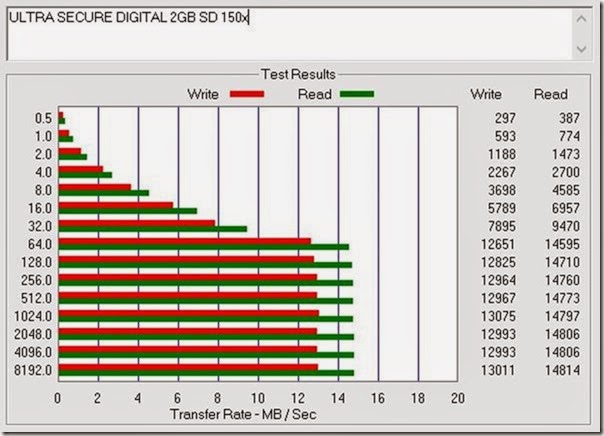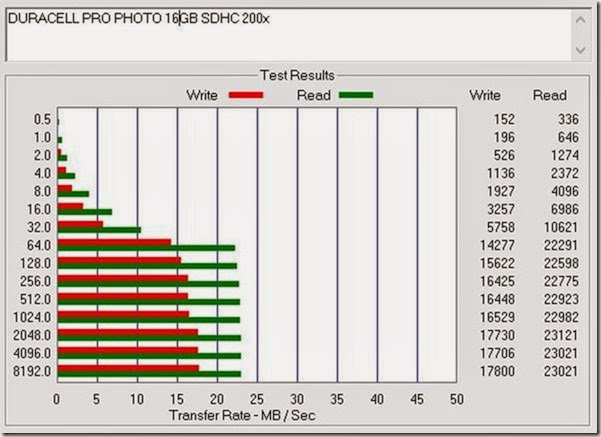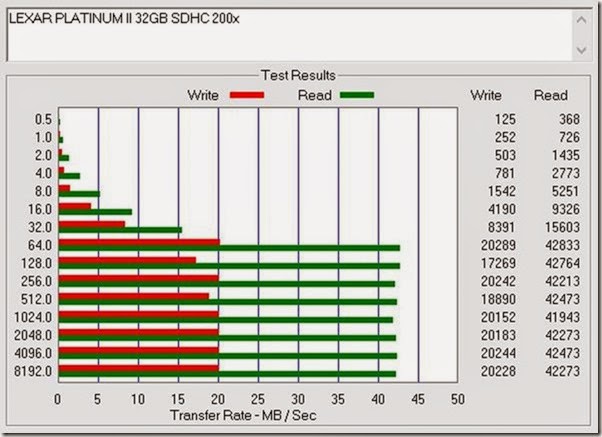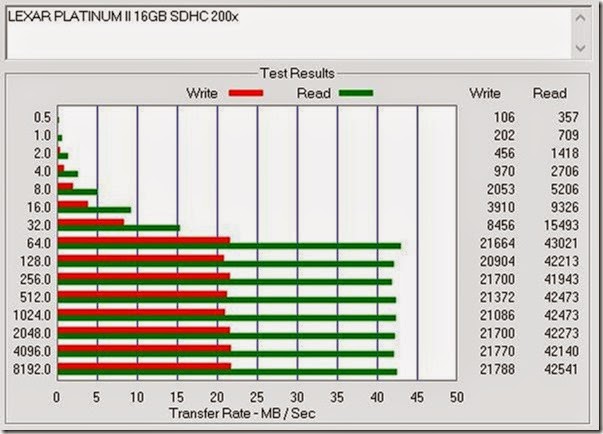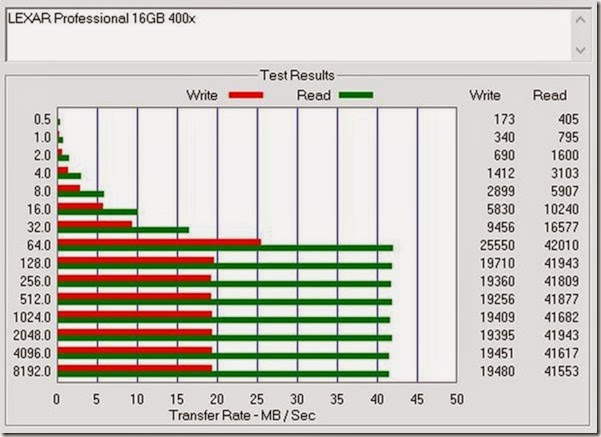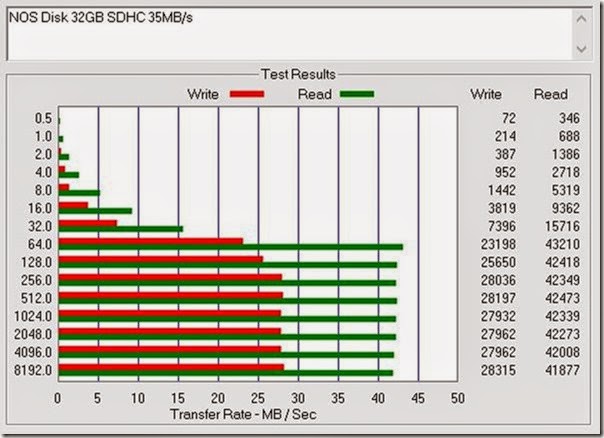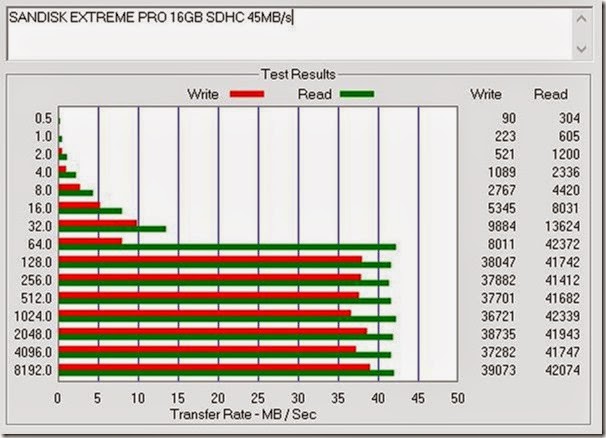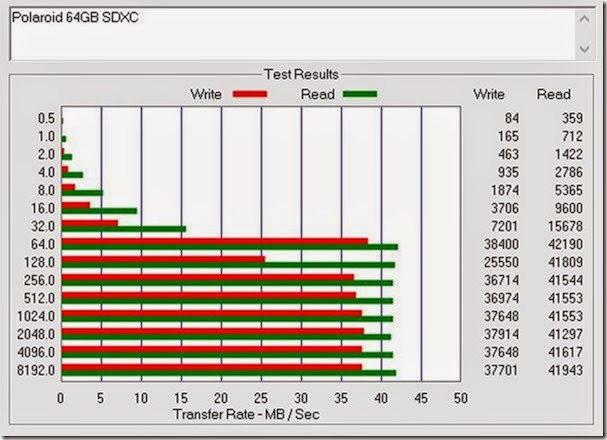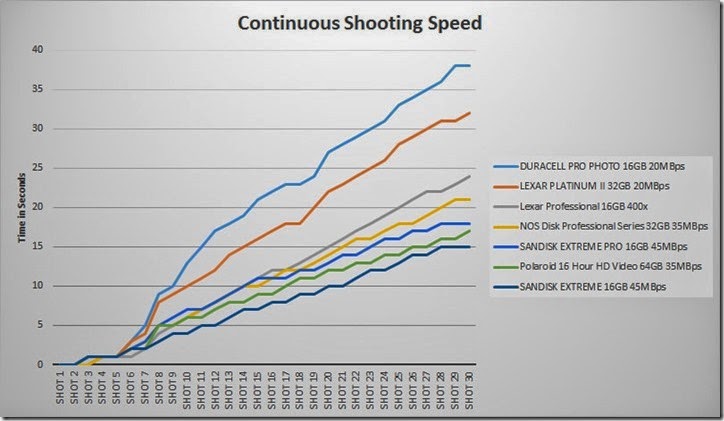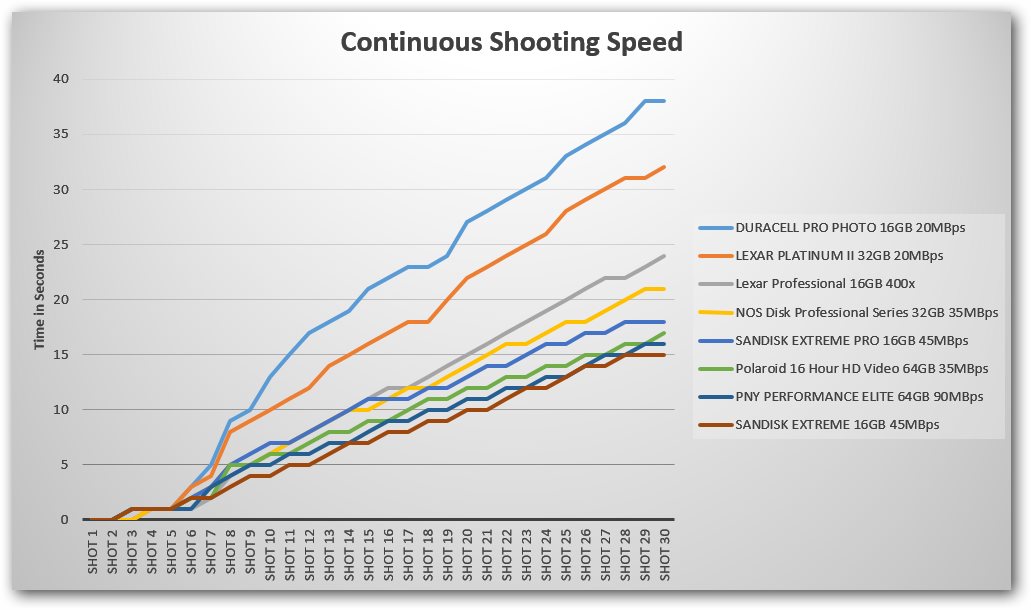**Update – I’ve added the PNY Performance Elite cards that I received as replacements for two PNY Polaroid cards that fell apart. They sent me a pair of their best cards and I decided to add their data here. You will see that addendum at the end of the original article.
I have been collecting numerous SD Cards over the years … I’ve destroyed a few by dropping them on the ground and rolling my chair over them and I’ve sent a few away with cameras I have sold. But I still have about a dozen of them, although several are in multiple copies.
I was curious as to how fast the Panasonic G6 can shoot raw in long bursts, which is a really good way of testing card write speeds using the camera’s file system interface. I decided to tests the cards I prefer to use most these days and so I created a test method that shows not only the total time to shoot a burst of 30 images, but also the intervals for all shots plotted on a curve to show how consistent the write times are for the duration of the burst. The results are rather illuminating, a veritable “burst” of information as it were …
So, to start, I will telegraph the results by showing you the lineup of cards from fastest on the left to slowest on the right, and with spacing that approximates the speed gaps …
A note on speeds: the class of the card is set based on the promised sustained write speeds in megabytes per second, This means that class 10 cards promise 10 MB/s sustained write, which is enough to capture approximately 80Mbps video streams. Some cards obviously exceed this promise and some have problems keeping the promise. This test shows examples of both. Note that UHS-1 still only promises 10MB/s write speeds, despite a faster bus. But read speeds are generally much better.
Manufacturers have often added extra information where appropriate to document read speeds, which determine how fast you can dump a very large card to disk. Dog slow cards can take hours to dump, but today’s cards are a whole lot faster and can dump very quickly, especially with a fast card reader on a USB 3 port. I use one such card reader – made by Pretec – on a USB 3 port and the difference from my older USB 2 reader is very obvious.
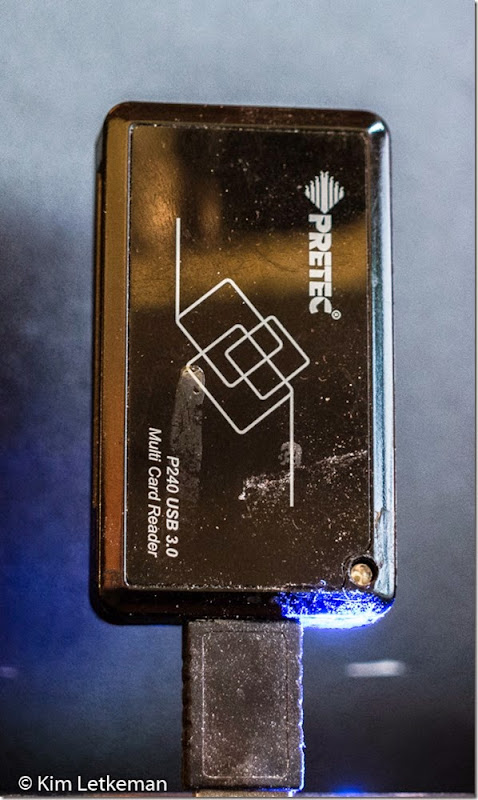 |
You can find some excellent tests of card readers and cards at Rob Galbraith’s site: http://www.robgalbraith.com/reader_report_multi_page5684.html?cid=6007-9438
That table was what made me choose the Pretec, which I obtained from an eBay seller for 20 bucks …. an absolute steal considering its performance. And do note that the number he gets seems a bit slower than what I get in my tests using the ATTO benchmark suite, covered in addition to the G6 numbers.
Back to promises made … card speeds specified as “x” speeds – e.g. 200x – are always “read speeds” and are multipliers on 1x being equal to 150KBps. So 200x promises read speeds of 30MBps, which is pretty fast. But there is no implication regarding write speeds in that. Some cards now have a direct promise of speed by specifying the MB/s read speeds on the card instead of the more obtuse “x” ratings.
Now to examine each card’s benchmark performance using screen shots of the ATTO benchmark. Note that I took no special precautions and some of the cards already had some data on them. This is a real world example and the numbers might change slightly were I to use the official SD Formatter on them etc, but I think you will see a strong level of consistency with the predicted speeds based on the card’s class and read speed ratings. They don’t lie … much.
I will proceed from the slowest to the fastest and then show you the performance graph of the actual tests run in the G6.
This is a really old 2GB card … I have no idea where I even got it. It does not even have a class specified, so I assume class 4 or 6. It does have 150x on it, specifying 22.5MB/s read speeds and lo and behold it fails to meet that promise by quite a bit. It comes in consistently at 14.7 or 14.8 MB/s once file sizes reach a reasonable size.
I won’t mention this again, but tiny files are handled poorly by all disks. The write and read speeds are simply abysmal. Once files get to sizes that match or exceed sector sizes, things dramatically improve.
The surprise with this card is the fact that it easily exceeds the write speeds of a class 10 card. Very well designed, obviously from that point of view. So they should have labeled it as class 10 and 100x and they would have had the perfect indicator of it actual performance.
Note that 13MB/s can handle all but the very highest bit rates in consumer video. But this card was not included in the G6 tests as I would never consider using such a small card for serious photography with today’s cameras and raw file sizes.
This card promises 10MB/s write speeds and 30MB/s read speeds and it absolutely fails on the read side, coming in at a paltry 23MB/s. It should be labeled as 150x. Shame on Duracell. The write speeds, however, are good and it can handle very high bit rates (remember that bit rates are 8 or more times larger than byte rates, so these rates can handle approximate bit rates of 142Mbps and there are few cameras that get anywhere near that speed.) Still, it is an absolute dog to read out a full card.
The other 200x card I tested in the G6 is anything but a dog, at least in this benchmark. It did come in second slowest on the tests though. The LEXAR Platinum II 32GB card is the one that stimulated me to try these tests, as I acquired it for a very low price at Future Shop … 20 bucks for 32GB.
The read speeds are very good, easily exceeding the 200x promise. They could almost label this card 300x and get away with it. They come painfully close to matching the advertised 45MB/s speeds of the Sandisk Extreme cards. And the write speeds are good, at 20MB/s. But look at some of the inconsistencies in speeds as file sizes change. Most cards do not show as much of that and those seem to perform better in the camera than this one.
I did not include the 16GB sibling of the previous card in the G6 tests, but it is obviously about the same speed. And this one has very consistent numbers, so might have performed a wee bit better than its big brother inside the G6.
Strangely enough, the next slowest card in the G6 tests was the only other LEXAR in the test … the LEXAR Professional 400x. And shame on Lexar for this one … it’s write speeds are slower than either of the Platinum II cards, and its read speeds are identical. 400x implies 60MB/s and this card is nowhere near that. It is in fact slower than the 200x sibling on read speeds as well. All in all, a huge disappointment. It is not as bad as all that in practical use in the G6 though, which you will soon see. There is a substantial gap from the 200x LEXARs to the 400x LEXAR Professional in the G6 test, indicating a much better ability to sustain its writing speed from file to file.
Note that it is clear that this card has a bus that is faster than that used in the average class 10 card in order to support faster writing by the camera. Or maybe it is simply better designed in general (fewer “I’m busy signals”), who knows? But the 400x moniker is still a false advertisement.
The NOS Disk card was inexpensive (I buy all my cards on sale or cheap and this shows :-) ) … I bought it because it is labeled 35MB/s and “high speed extreme”, stealing Sandisk language. The performance is certainly above those that went before for writing speed, clocking in at about 28MB/s … but read speeds do not scale equally, pretty much matching all the cards but two.
Still, it may be able to handle even the GH4’s 200Mbps write speeds, as it has sustained speeds exceeding that. Of course, it might be that the bus cannot keep up that pace to fill the entire card, causing possible spanning problems. Still …. it would be worth a test …
If anyone wants to send me a GH4 for testing, please feel free … ![]()
The SANDISK EXTREME PRO – one of only three UHS-1 cards in the test – was expected to win the G6 test, yet it came in 3rd. But it does maintain a spectacular write speed of over 36MB/s … note, though, the variation in speeds may indicate why this older card had pauses that caused it to fall out of first place.
I bought this one a long time ago and paid a small fortune for it. And it was certainly very fast for its time. And read speeds more or less match everyone else, which is disappointing since it is the first one labeled at 45MB/s and does not hit that mark.
The Polaroid 64GB SDXC card is an extremely pleasant surprise. It too is marked as 35MB/s and UHS-1 and the performance is wonderful for 40 bucks. Great value.
And finally ….
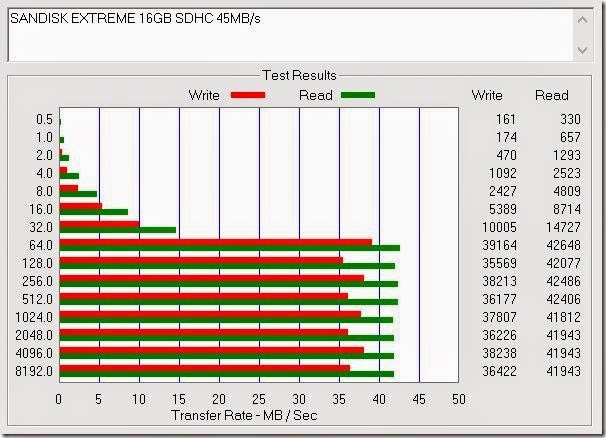 |
The very basic Sandisk Extreme 45MB/s card wins it all in the G6 test. Also a UHS-1 and much newer than the EXTREME PRO card that came in third.
So here is the graph of the cards as they performed in the G6. To be fair, the last three UHS cards were pretty close to one another. But the newer SANDISK Extreme had the most consistent buffer clear as shown in the even stair steps, and it was therefore the only one able to nail a 2 frame per second rate over 30 shots. That’s not half bad in raw for a mode that provides live view and AF between shots.
A note on methodology:
I photographed a web site showing current eastern time, which has a clock face with a second hand. I pressed the shutter down when the second hand got to a major tick mark and held the button down until I passed 30 images. This is what the first image looked like for the NOS Disk card:
Each image shows the second hand and I created a spread sheet with the images labeled by their tick mark, the one here is counted as 0. Each image is therefore tagged with the second in which it occurred and the graph shows exactly that. I created a spread sheet for all 30 images by camera:
This was graphed as shown above. Note the dramatic pause after the 5th and again after the 6th on some cards. This is where bus speed and design make all the difference. And even cards labeled the same can have much differing performance, as the Lexar / Duracell gulf shows at the 200x mark. At the least, the Lexar is a far better value for its vastly faster read speeds.
Interpreting the graph:
The first three shots for all cards except the NOS took place in the first second. The NOS squeezed 4 shots in. The first 5 shots for all cards were squeezed into the first 2 seconds, indicating a decent speed when the buffer is being used. Then things get hairy, as the cards start to separate very quickly. The UHS-1 cards sustain better rates overall, so there is no doubt that purchasing anything else must be based on price alone. And these days, there are many sales on UHS-1 cards, so there is no real point in buying the older models. This is a lesson I personally learned with the recent purchase of the NOS Disk and the Lexar 32GB cards. Good capacity, but less than stellar continuous shot performance. Not that I shoot much action, but why play around with lesser cards?
And the methodology lends itself to showing the smoothness and consistency of each card’s pacing. This tells you which cards would be better at capturing a smoother sequence with more consistent intra-frame times. Again, UHS-1 seems to be the better choice.
Bottom Line
I would tend to buy the Sandisk Extreme cards when on sale. 45MB/s cards perform very well. Polaroid cards are an absolute bargain. I shot a concert with four bodies with these cards and they handled video up to 60Mbps and spanned perfectly. Good cards and great capacity.
The 200x cards are perfectly fine if you don’t shoot long bursts, but do note that emptying the card would be painful with the Duracell whereas the Lexar is perfectly fine. And if you can afford it, the 95MB/s cards are probably worth it as they sustain even higher writing rates and empty the cards in a great big hurry.
I hope that someone found this useful … I had fun creating the test. And check out Rob’s site for a serious set of tests of cards and readers …
| Note that the Polaroid cards have gone back to their original 60 dollar price, and so are not the value they once were. But the people who make the Polaroid card – PNY – have their own elite card on sale on Amazon for only 33 bucks! And instead of rating it at 35MB/s, they rate it at 90MB/s … if this comes anywhere close, it will be incredible. |
ADDENDUM
The PNY ELITE PERFORMANCE 64GB card is marked with a 90MB/s read speed so I was really looking forward to seeing the speed of this card. And it performed well in ACCO’s benchmark for write speeds, but the read speeds were similar to the other high performance cards. This confirms my suspicion that my system and / or card reader is somehow speed limited. I’ll have to continue looking into that …
Meanwhile, here is the benchmark:
That is the best set of readings I got on any of the cards. So I eagerly stuck the card into the G6 and pounded out a quick test. The results were very good, but slightly disappointing as this card slotted in 1s slower than the Sandisk Extreme and 1s faster than the Polaroid PNY. A very close race indeed between the top 3 cards, two of which come from PNY. Good on them …
Here is the new graph:
So there you have it … not much to choose between the Sandisk Extreme and the PNY Elite Performance. Both are very smooth and quick, with the PNY Polaroid just a hair behind. It remains a truism that fast cards perform better in fast cameras.

